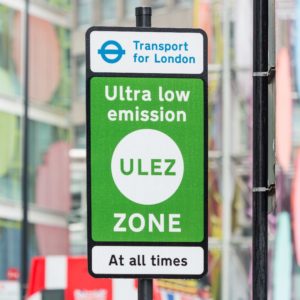Over the past few years local authorities in towns and cities across the UK have introduced schemes to improve air quality and protect public health.
These set an emissions limit for certain road spaces or zones, charging drivers of the most polluting vehicles, often pre-Euro-6 diesel vehicles and petrol vans below Euro-4 standard.
Local authorities also normally offer some exemptions, such as for blue light sector drivers, and operate and enforce their schemes using Automatic Number Plate Recognition (ANPR) cameras.
So, which schemes are already in place and what developments are in the pipeline?
OXFORD

It operates from 7am to 7pm, all year round on a handful of streets, with all petrol, diesel and hybrid vehicles incurring a daily charge unless eligible for a discount or exemption.
The pilot will allow Oxfordshire County Council and Oxford City Council to gain insights before introducing a larger ZEZ covering most of the city centre in 2023, subject to further public consultation.
Charges are enforced by ANPR cameras and vary from £2 to £10 per day depending on the emission levels of the vehicle.
A range of exemptions and discounts are available for businesses and residents in the zone and funds raised by the ZEZ are used to cover the implementation and running costs of the scheme.
DPD has a fleet of 40 electric vehicles working across Oxford, which have been delivering more than 15,000 parcels every week.
Tim Jones, Director of Marketing, Communications & Sustainability at DPD Group UK, said: “The feedback from drivers and customers has been fantastic and we feel that we have really proved that these vehicles can work, day in, day out in the city.
“We fully understand that there will be challenges for businesses and individuals; we have been through the whole process lots of times and in lots of different locations and it hasn’t always been easy.
“But we believe transitioning to greener, more sustainable vehicles is the right way forward, both environmentally, and commercially and we are backing the Oxford Zero Emission Zone to bring long term benefits to the city, it’s residents and the wider environment.”
LONDON
The London Low Emission Zone (LEZ) is a capital-wide traffic pollution charge scheme with the aim of reducing the exhaust gas emissions of diesel-powered vehicles in London.
Commercial vehicles weighing more than 3.5 tonnes must meet Euro-6 standards or face a penalty of £100 per day.

Charges for non-compliance are £12.50 a day for vans and £100 a day for trucks, buses and coaches.
The ULEZ zone was extended to the North and South Circular from October last year, and is due to be expanded in 2023 to cover all of Greater London.
Earlier this year, Mayor Sadiq Khan said the long-term and fairest way to solve pollution, carbon emissions and congestion will ultimately be smart road user charging, but added that Transport for London (TfL) was still “many years away” from bringing in such a scheme.
Christina Calderato, TfL’s Director of Transport Strategy, said: “Road-based transport has for many years been a major contributor towards poor air quality and carbon emissions and we are determined to tackle this through a wide range of programmes across TfL.
“The world-leading road user charging schemes we’ve delivered throughout the last two decades have been really effective, but it is clear that as a city we need to go further.”
OTHER PARTS OF ENGLAND
The Bath CAZ, unveiled in March 2021, imposes a £9 charge for non-compliant vans, rising to £100 for trucks and buses.
Meanwhile, Birmingham’s zone inside the A4540 ring road, launched in June last year, sees pre-Euro-6 diesel trucks and buses required to pay a daily £50 charge to enter.
In November, Portsmouth City Council started its own CAZ, with pre-Euro-6 HGVs and buses paying £50 per day fine to enter, and a £10 daily charge for non-compliant vans.
Bristol is due to introduce its CAZ this November and has agreed a £42 million package of support with government, which includes £32m for businesses to upgrade HGVs, LGVs, taxis and private hire vehicles.
Financial support will be in the form of a grant or a contribution to interest on a loan, for example, the maximum grant for vans is £4,500.
Bristol Mayor Marvin Rees said: “Poor air quality has a major impact on the health of everyone in the city and the Clean Air Zone will help us tackle this issue and meet government targets for cleaner air in 2023.”
Bradford, Newcastle and Sheffield are also expected to introduce Clean Air Zones within the next 12 months, all potentially including HGVs and vans.
SCOTLAND

Edinburgh, Dundee and Aberdeen are due to begin enforcement in mid-2024, with all four cities proposing schemes operating 24 hours a day, seven days a week.
Across the four cities, the initial penalty for non-compliant will be £60, with a subsequent doubling for each contravention, capped at £480 for light good vehicles, and £960 for buses and HGVs.
Neil Leckie, Senior Programme Manager at the Energy Saving Trust, said: “The expansion of Low Emission Zones in Scotland’s major cities will play a key role in improving air quality and in the transition to a net zero carbon society.
“The zones will encourage the use of low carbon transport and active travel, and available funding to prepare for the changes will support the individuals and businesses who need it most.”
These zones have a big part to play in helping local authorities meet their zero carbon targets over the coming years and in the process protect public health and improve air quality.








